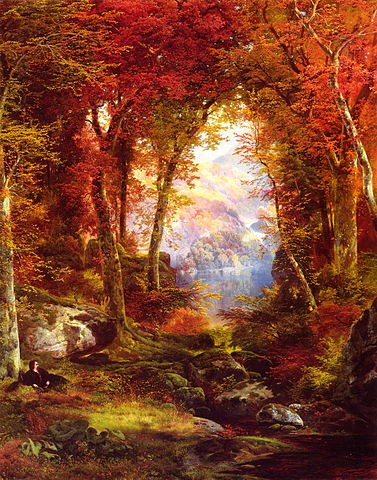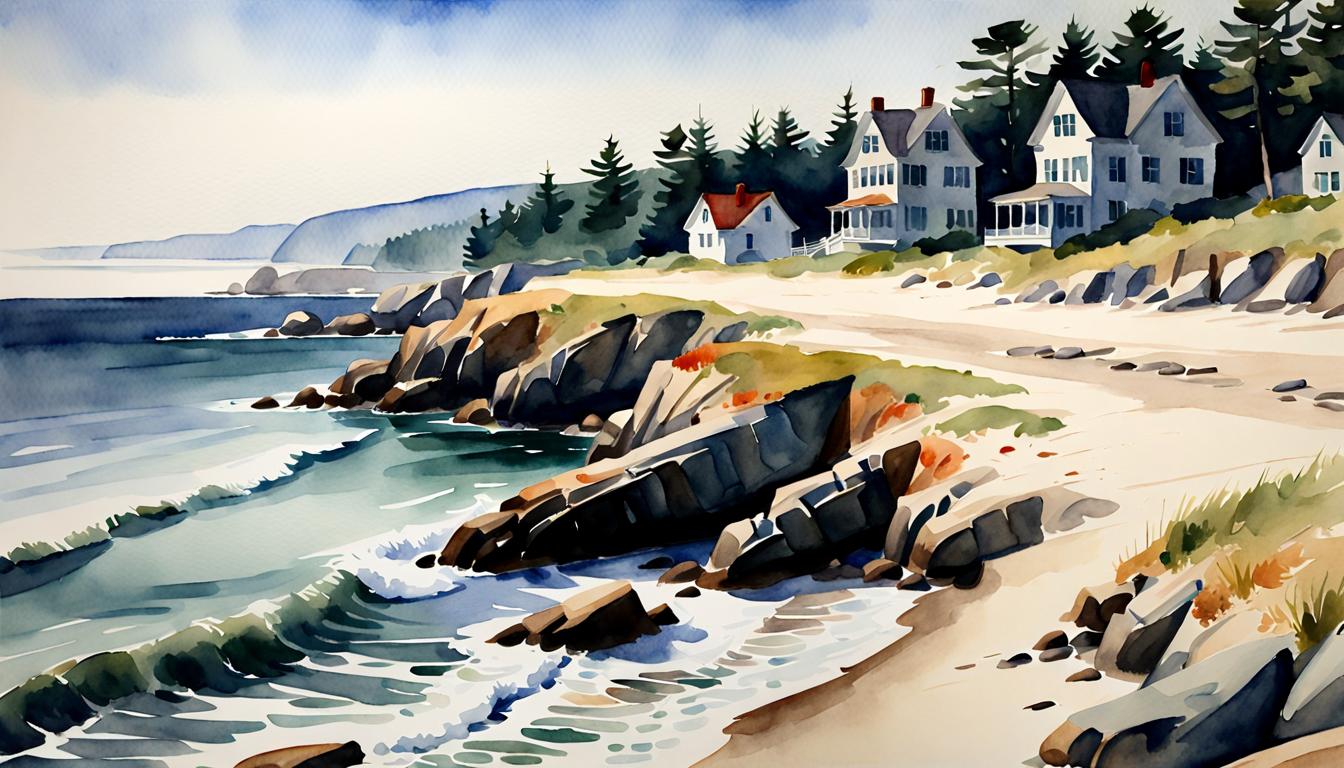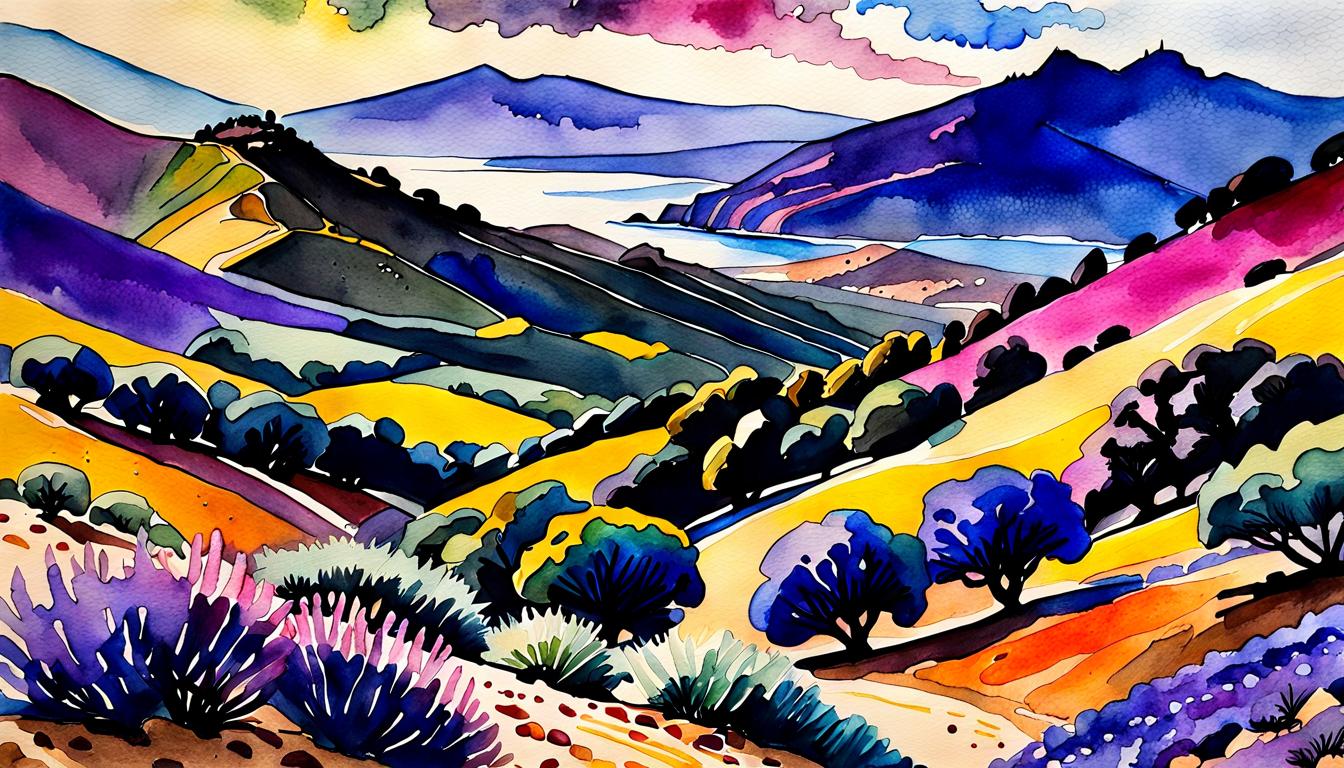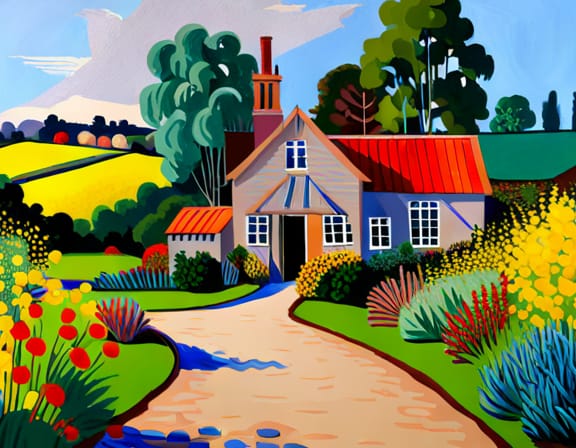
David Hockney is one of the most popular and widely recognised artists of our time. For over sixty years, he has enchanted audiences with his bold, colourful, and innovative art. He has used paint, collage, photomontage, and many more techniques and materials in his work. He has also used phones and tablets to create digital artworks. Although his art uses many different styles and materials, it is usually about people and places.
David Hockney’s Watercolors
One of the most distinctive aspects of Hockney’s art is his use of watercolor. Watercolor is a painting technique that uses water-soluble pigments to create transparent and luminous effects. Watercolor is often considered a difficult medium to master, as it requires skill, patience, and spontaneity. Hockney has experimented with watercolor since his early years, but he became more interested in it after 2000, when he moved back to his native Yorkshire and started painting the landscapes around him.
Hockney’s Palette
Hockney’s watercolors are remarkable for their freshness, vibrancy, and simplicity. He paints with a limited palette of colors, often using only primary colors (red, yellow, and blue) and secondary colors (orange, green, and purple). He mixes the colors on the paper, rather than on a palette, creating subtle variations and contrasts. He also uses white paper as a negative space, leaving some areas unpainted to suggest light and depth.
Hockney’s Watercolor Inspirations
Hockney’s watercolors are inspired by his love of nature and light. He paints the changing seasons, the weather, the trees, the flowers, the fields, and the sky. He captures the mood and atmosphere of each scene with his expressive brushstrokes and splashes of color. He also pays attention to the details, such as the shadows, reflections, textures, and patterns. He often paints from direct observation, working outdoors or from his car window. He sometimes makes sketches or takes photographs as references, but he prefers to paint from memory or imagination.
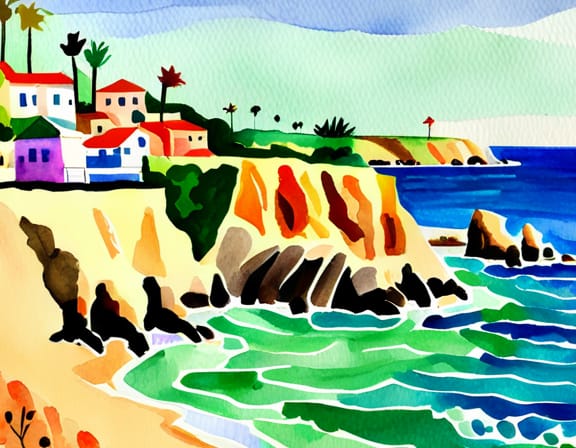
Hockney’s watercolors are not only beautiful to look at, but also meaningful to him. They reflect his personal connection to the places he paints, as well as his artistic vision and philosophy. He once said:
He also said:
For Hockney, watercolor is a way of expressing his joy of life and his appreciation of nature.
Where Can I See David Hockney’s Watercolors?
| Rank | Title | Date | Description | Gallery |
|---|---|---|---|---|
| 1 | A Bigger Splash | 1967 | A painting of a swimming pool in Los Angeles, with a figure diving in. It is one of Hockney’s most iconic works. | Tate Britain, London |
| 2 | Portrait of an Artist (Pool with Two Figures) | 1972 | A double portrait of Peter Schlesinger, Hockney’s then-boyfriend, and a figure swimming in a pool. It is considered one of the most important paintings of the 20th century. | Los Angeles County Museum of Art |
| 3 | Pacific Coast Highway and Santa Monica Mountains | 1991 | A watercolor of the Pacific Coast Highway and Santa Monica Mountains, with the ocean in the distance. It is a beautiful and evocative depiction of the Southern California landscape. | Metropolitan Museum of Art, New York |
| 4 | The Yosemite Suite | 1998 | A series of 60 watercolors of Yosemite National Park. Hockney spent several months in Yosemite, painting the park’s towering cliffs, waterfalls, and meadows. | De Young Museum, San Francisco |
| 5 | Yorkshire Wolds, Winter | 2004 | A watercolor of the Yorkshire Wolds, a range of hills in northern England. The painting is a celebration of the English countryside, with its rolling hills, hedgerows, and trees. | Tate Modern, London |
| 6 | The Arrival of Spring in Woldgate | 2011 | A watercolor of the arrival of spring in Woldgate, a village in the Yorkshire Wolds. The painting is full of life and color, with blossoming trees, flowers, and birds. | Private collection |
| 7 | My Vegetable Garden | 2013 | A series of watercolors of Hockney’s vegetable garden in Bridlington, England. The paintings are a celebration of the beauty and abundance of nature. | Los Angeles County Museum of Art |
| 8 | The Four Seasons | 2016 | A series of four watercolors depicting the changing seasons in Woldgate. The paintings are a beautiful and lyrical celebration of the natural world. | Private collection |
| 9 | 82 Portraits and One Still-Life | 2016 | A series of 82 watercolors and one still-life depicting Hockney’s friends and family. The paintings are a testament to Hockney’s love of his close ones and his skill as a portrait artist. | Royal Academy of Arts, London |
| 10 | The Arrival of Spring in Woldgate (Second Version) | 2018 | A second version of Hockney’s painting The Arrival of Spring in Woldgate. The painting is similar to the first version, but it is more colorful and vibrant. | Private collection |
Hockney’s watercolors have been widely exhibited and acclaimed by critics and audiences alike. They have also influenced other artists who admire his mastery of the medium and his originality of style. Hockney’s watercolors are a testament to his enduring creativity and curiosity. They show us how he sees the world with fresh eyes and how he makes us see it too.
